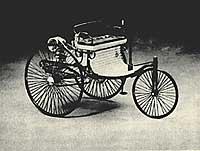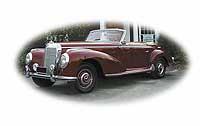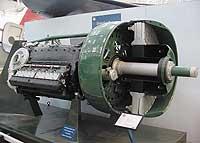From horse to motor

Engineer Carl Benz invented the first vehicle with exploding engine, but did not patented it. In fact, 100 meters from the Benz factory worked Gottfried Daimler, car manufacturer and competitors, in another workshop. Both were disputed and Daimler was the first to incorporate and kick a bicycle a vertical single-cylinder gasoline. The first patented car is therefore that of Daimler.
History of the explosion engineXX. In the mid-twentieth century the vehicles operated with steam and electricity, reaching to travel 100 kilometers per hour. But then a third competitor was prepared to get much further: the explosion engine or the internal combustion engine.
Scientists soon realized that the steam engine was too large to be used in cars. They needed a smaller device and the internal combustion engine seemed adequate. In this type of engine fuel is injected, mixed with air and exploited to move the inner piston of a cylinder.

Over time, the researchers found that these engines had too low power and concluded that the mixture of fuel and air had to be compressed. Alphonse Beau de Rochase solved this problem by inventing a four-stroke engine in 1862. The new system was adapted by the German Nikolaus August Otto and invented engines with gasoline.
Petrol engine petrol
Seven years later it was Daimler, with the help of Mayback, who began testing engines with gasoline. These engines were extremely compact, suitable for light vehicles.
In 1885 an engine of this type was incorporated to a wooden bike and a year later to a four-wheel car. In 1885, the German inventor Carl Benz created the appropriate engine for the car and patented the car itself.
The inventions of both Benz and Daimler created a great look in France and two French engineers bought their patents to build solid and fast vehicles.
Car racing car races
XIX. At the end of the twentieth century, therefore, three types of vehicles could be seen in several European countries: vehicles moving by steam, electricity and gasoline. But which of the three was the fastest? Car racing began to answer this question.
The first major race was organized by the Frenchman Pierre Giffard in 1894. The route from Paris was that of Rouen, with a total of 126 kilometers. The winner was Count Dion, who participated with a steam engine vehicle and toured an average of 22 kilometers per hour.
The explosion engine lost a battle that year, but not the war. In fact, the following year a much more complicated and longer race was organized, back and forth from Paris to Bordeaux, winning a vehicle with this type of engine. A total of 20 cars participated, including one tractor, three steam-powered vehicles, an electric motor and four with gasoline, including three from the well-known Peugeot house. The winner spent half the time planned by the organization, that is, 50 hours instead of 100. That same year it became clear that the vehicle with gasoline was much stronger than the other two.

Over time the internal combustion engine was improving. The Daimler engine was very extended and refined: In 1901, Maybach, heir of Daimler, launched the famous Mercedes on the market. Three years later, the British brand Rolls-Royce was imposed. In 1908, however, the gasoline engine was created a great competitor: Rudolf Diesel heavy oil engine. In addition to a rapid immersion in the world of vehicles, the Diesel engine was quickly introduced into the market of locomotives and ships.
However, engineers Daimler and Benz continued to build engines adapted to all new technologies. Two prestigious companies, after multiple vicissitudes, create a new company. Today, although the Daimler house is missing, Mercedes-Benz is still on the market.





